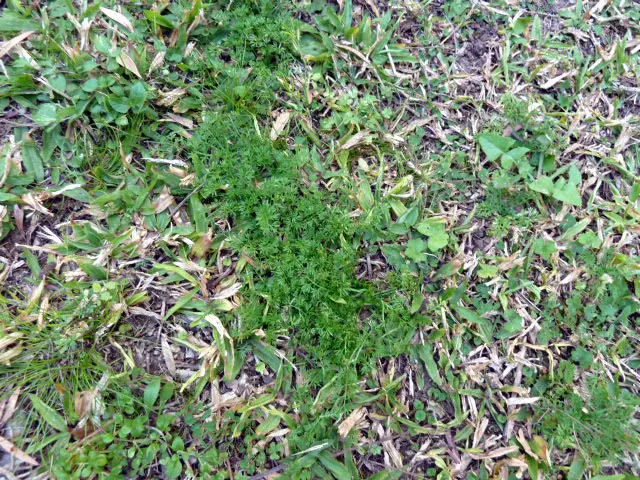Get 10% off your first online order. Use coupon code FIRST10 at checkout. Dismiss
Skip to content
As the Sunshine Coast weather starts warming up, your lawn is waking from its winter slowdown. Unfortunately, so are the weeds. Bindii, clover, oxalis, nutgrass, paspalum and more thrive at this time of year, competing with your lawn for water, nutrients, and sunlight. Here’s your guide to identifying and controlling them before they take over.

Clover is easy to spot by its oval-shaped leaves, usually three per stem (four if you’re lucky), with a distinct white circular marking across each leaf. It grows from thin stems and produces small white ball-like flowers.

Bindii is a low-growing weed with a flower at its centre. At maturity, this flower produces a prickly seed pod, making summer lawns painful for kids and pets.

Paspalum is a perennial grass weed with a purple tinge at the base of its broad leaves, spreading mainly in warmer months. Its sticky seeds cling easily to shoes and pets.

Often confused with clover, oxalis has small heart-shaped leaves (light green or purple) and produces white, pink, or yellow flowers.

Cudweed forms rosettes with glossy light green leaves on top and white furry undersides. They produce various small flowers from their stems.

A low-growing winter annual that can keep growing into summer. It has paired leaves opposite each other and produces tiny white flowers at stem tips.

Nutgrass is a sedge weed, lighter green than lawn grass and growing taller. It has three blades per stem and a triangular stem (unlike circular grass stems).

This annual grass has soft, hairy leaves growing close to the ground. The leaf sheathes are usually purple-tinged at the base.

A summer annual growing in tufts with flat, white sheathed stems and smooth, strap-like leaves.

A perennial sedge with dark green glossy strap-like leaves and long red-purple rhizomes.
We stock a wide range of Solo sprayers and hand sprayers—from handheld to backpack sizes—making herbicide application easier and more effective.
Shop online with Australia-wide shipping or click and collect from our store in Little Mountain. Need a hand finding the right product? Get in touch.
Not sure what you need? Speak with an expert.